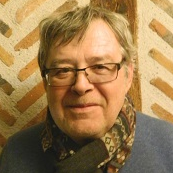Remote Sensing for Soil Mapping and Monitoring
A special issue of Remote Sensing (ISSN 2072-4292). This special issue belongs to the section "Remote Sensing in Agriculture and Vegetation".
Deadline for manuscript submissions: closed (30 April 2023) | Viewed by 33950
Special Issue Editors
Interests: digital soil mapping of soil properties and classes; global soil mapping; soil organic carbon
Special Issues, Collections and Topics in MDPI journals
Interests: remote sensing of agroecosystems; viticultural zoning; terroir; remote sensing of agricultural soils; sentinel time series; soil carbon storage
Special Issues, Collections and Topics in MDPI journals
Special Issue Information
Dear Colleagues,
MDPI is launching a Special Issue entitled “Remote Sensing for Soil Mapping and Monitoring”. This Issue welcomes papers dealing with mapping soil properties using remote sensing data (proximal, airborne, and satellite remote sensing), alone or in combination, to map and monitor soil properties.
Given the increasingly available remote sensing data, particularly satellite time series with high spatial resolution such as Sentinel 1 or 2, remote sensing data may provide a valuable basis for updating and monitoring soil properties. These data may be used in combination with other environmental data (e.g., digital elevation model (DEM) derivatives, existing soil, geological maps, etc.) to predict some soil properties at high spatial resolution (from 10 to 90 m) over various geographical bodies, from fields to landscapes, regions, countries, and the globe. How the data can be used and to what extent, due to direct information relying on bare soil that covers a limited area, raise specific issues. The incorporation of remote sensing data into spatial models also raises questions about error uncertainty assessment.
Special attention will be paid to methods developed for monitoring soil carbon content and stocks, but this is not mandatory. Papers will be published online when accepted. Remote sensing data may be used in combination with other environmental data (e.g., DEM derivatives, existing soil, or geological maps) to predict certain soil properties at high spatial resolution (from 10 to 90 m) over various geographical bodies, from fields to landscapes, regions, countries, and the globe.
Dr. Dominique Arrouays
Dr. Emmanuelle Vaudour
Guest Editors
Manuscript Submission Information
Manuscripts should be submitted online at www.mdpi.com by registering and logging in to this website. Once you are registered, click here to go to the submission form. Manuscripts can be submitted until the deadline. All submissions that pass pre-check are peer-reviewed. Accepted papers will be published continuously in the journal (as soon as accepted) and will be listed together on the special issue website. Research articles, review articles as well as short communications are invited. For planned papers, a title and short abstract (about 100 words) can be sent to the Editorial Office for announcement on this website.
Submitted manuscripts should not have been published previously, nor be under consideration for publication elsewhere (except conference proceedings papers). All manuscripts are thoroughly refereed through a single-blind peer-review process. A guide for authors and other relevant information for submission of manuscripts is available on the Instructions for Authors page. Remote Sensing is an international peer-reviewed open access semimonthly journal published by MDPI.
Please visit the Instructions for Authors page before submitting a manuscript. The Article Processing Charge (APC) for publication in this open access journal is 2700 CHF (Swiss Francs). Submitted papers should be well formatted and use good English. Authors may use MDPI's English editing service prior to publication or during author revisions.
Keywords
- digital soil mapping
- soil properties monitoring
- satellite time series
- soil carbon content
- soil carbons stocks






